How to Make an Herbal Hydrosol for Beautiful Skin.
There is an amazing cohesion that takes place between volatile oil and water when making an herbal hydrosol. It reminds me a lot of the forbidden romance of Romeo and Juliet in the sense that they are forbidden to be together. However for hydrosols, that oil and water continue as one entity bringing together the lovely aromatics of herbs into a wonderful aqueous coexistence.
What is an Herbal Hydrosol?
Hydrosols are the baby that comes from distilling aromatic herbs for their essential oils leaving a faint but pleasant memory behind in the remaining water.
Only recently have floral waters been saved from being disposed of as lowly byproducts. Since their unique medicinal and therapeutic properties had not yet been realized, only rose and orange blossom waters had center stage as true hydrosols.
Nowadays many aromatic herbs are appreciated for their soothing, anti-inflammatory, and hydrating properties that are not found in essentials oils. Whereas most essential oils must be diluted before application, hydrosols do not.
How to Use Herbal Hydrosols
Hydrosols can be used both internally and externally provided they come from a nontoxic plant. Their light flavor and aroma pair wonderfully with homemade skincare recipes like lotions, body mists, and mouthwash as well as baked goods like baklava, tea cakes, and cookies.
Externally hydrosols are slightly astringent in nature and are wonderful as a daily skin tonic. They are incredibly hydrating for dry skin types and work well as toners for balancing pH and normalizing the skin’s acid mantle. Hydrosols are also good for acne prone skin and oily complexions.
I especially love rose hydrosol for skincare as it's healing, balancing, and restores the skin's proper pH levels.
To use herbal hydrosols externally, simply spray them directly onto freshly cleansed skin. Apply your usual moisturizer (I like to use hemp seed oil) and let it all soak in before applying any cosmetics. Your skin should feel refreshed and hydrated.
Some of my favorite hydrosols to use include:
• Rose
• Chamomile
• Catnip - try this one with your cat, you won’t be disappointed!
• Frankincense
• Jasmine
• Lavender
• Thyme- great for acne prone skin
• Lemon Verbena- Oh my goodness!
• Peppermint (you can read more about peppermint hydrosol here.)
How to Make an Herbal Hydrosol
Since hydrosols are a product of steam distillation and buying real one is just a bit nutty, we will need to make our own. This is simple and kinda rewarding!
Here’s what You’ll Need
• A stock pot that is enameled or made from non-reactive metal (stainless steel will work)
• A lid without a steam release hole
• A metal vegetable steamer that goes inside the pot
• A bowl
• 3 liters of spring water
• 10oz of fresh herb
• Ice
Loving Preparation - Herbal Hydrosol Recipe
1. Make sure all of your distillation pieces are clean
2. Pour in the 3 liters of spring water
3. Add the plant matter and let it sit for a few hours
4. Put the strainer into the pot fully opened
5. Put the bowl on the strainer
6. Bring your water/plant matter to a boil
7. Once it begins to simmer, put on the lid upside down
8. Place a nice big bag of ice on the upside down lid (the ice will give your hydrosol more oomph but isn’t necessary)
9. Keep the water simmering nicely at about medium heat
10. The vapor produced from the boiling plant matter will condense on the lid and drip into the bowl
11. Let the water/plant matter distill for a few hours or until you have the desired amount of hydrosol
12. Let the hydrosol cool enough to be poured into glass bottles
13. Keep them capped tightly (hydrosols will last much longer in the refrigerator)
Spritz on your hydrosol to refresh and awaken your senses with a snapshot of aromatic herbs.
[yumprint-recipe id='74']Have you ever made your own herbal hydrosols before? Please share in the comments!
You may also enjoy reading:
How to Pamper your Face for Clear Skin
How to Make a Cooling Peppermint Hydrosol
Elderflower Water: A Homemade Hydrosol
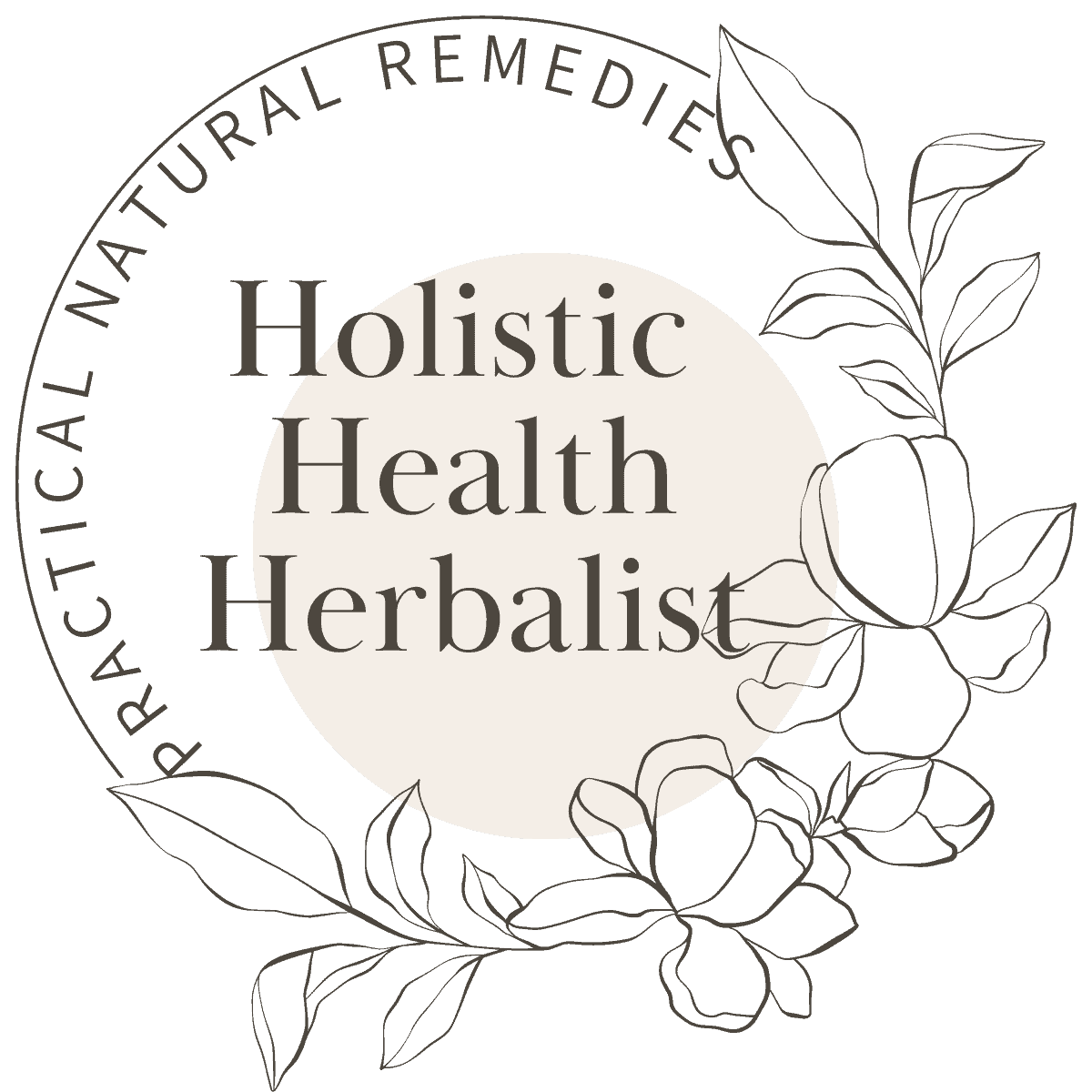

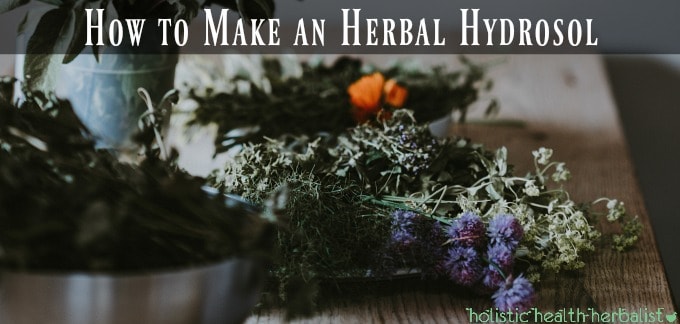
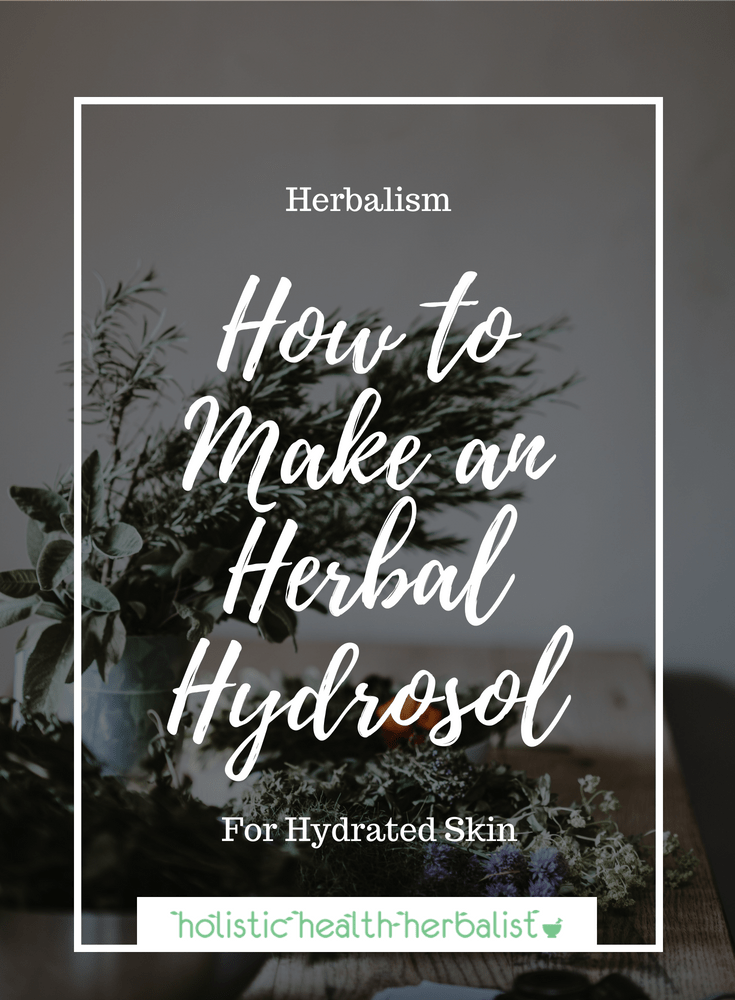
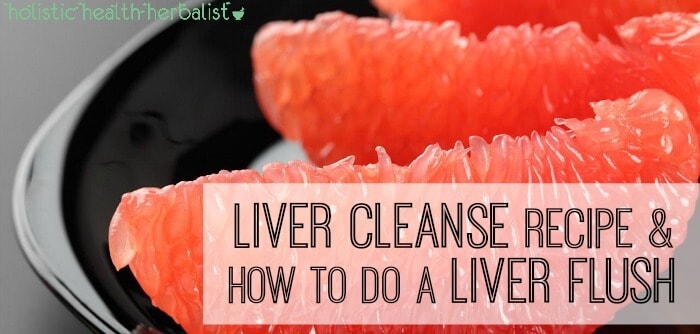

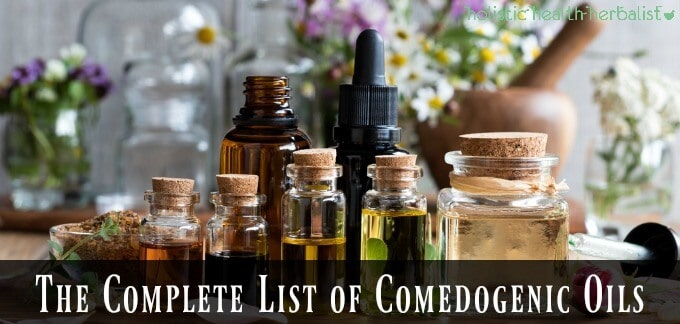
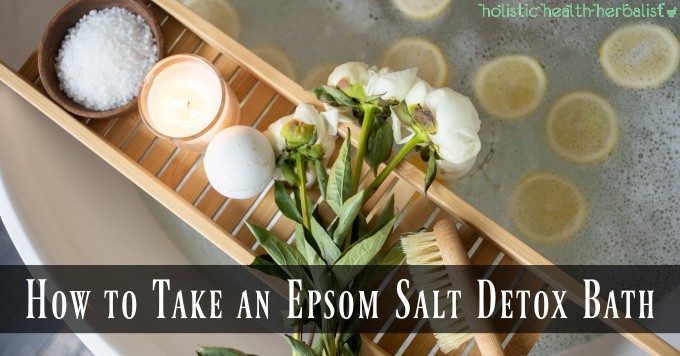
Janet says
Hi Tash. I'm wondering if I can make a hydrosol with regular geraniums (not rose geraniums), and if there would be any benefits of doing this. I can't find any info on this, but a lot on rose geraniums.
Niamh says
Hello there! l love this blog 🙂 As per a previous posters suggestion is it possible/safe to use a preservative to make the floral water last longer than a week? Thanks so much x
Deanna says
@ mimi - put the entire pot in the fridge overnight, the essential oils that have steamed out of the plant matter will be on top and harden and you can collect them. if you pick up some water too - heat on low and the water will evaporate out. Warning - 10oz of plant matter produces only a small amount of essential oil and it will not be quite as strong/potent as when done with a distiller. Have fun!
kim says
HI Tash - Thank you for this article. How long do hydrosols last out of refrigeration? Is there anything bad about using one that is old or it just won't have the same effect?
cyrena says
Just learning about hydrosol, however I wanted to make a toner and wondering would the herbal water left in the pot work and what is the shelf life? I also plan on adding other ingredients for different skin types.
Craig Loeffelholz says
Nice / informative. As much as had read of essential oils / hydrosols ("cold / critical" or whatever the recent fad was), I had never run across basic very effective method of condensation in readily available pots/bowls. In todays world where nature and flowers struggle to thrive, nice to read of such methods that help appreciate the power of nature & as well put in bottles through off-season & or for concentrated holistic medicine.
Thank you
Mac says
Thanks for the details in this process. I made a hydrosol with chamomile flowers, lemon balm and dandelion flowers that ended up much darker than other hydrodols; it was the color of dark tea. Later I realized I had used an aluminum pot for the process (even though the "collecting lid" was enameled and the collecting container was glass. Should I toss this or is there a way to salvage it? Thanks very much!
Tash says
Hi Mac!
Hmmmm, I'm wondering if the aluminum transferred into the finished product? If it did, I'm just concerned about how much of that would get absorbed into the skin.
Erika says
The lid keeping it pretty much airtight seems to be a problem for me. Am I missing something?
Rachel says
Can you post the process if you do have a distiller please?
aprierta suci says
thank you so much for making this, i wanna ask something
can we make a hydrosol not just by 1 plant? like mixing several plant in the pot? thank you so muchhhh
Tash says
Yes, you can! 🙂
STEVIE says
Hi Tash,
I tried your methods yesterday with my fresh lavender everything went just as you said but there was no smellbean at all in the bowl. It smelled wonderful when I was making it . HELP
Stevie
Tash says
Hi Stevie!
I wonder if the heat wasn't high enough? Or perhaps the steam was escaping somehow? That's the only thing I can think of!
Binky Melnik says
Hi, Tash: I only just heard of hydrosol today. I don’t use essential oils,but I eat wheelbarrows full of grapefruit every day, and wen throwing the peels out, I always wish I had a way to save the smell for use later. Finally getting serious about the idea, I did some research and that’s how I iscovered that a hydrosol is zactly what I need! I’m think my [new, unused] crockpot will be POIFKT for this DIY project.
I’d appreciate one thing: please explain what purpose the ice serves in science terms. I don’t need “oomph,” but if the ice akshully provides a real benefit, then I’ll do that.
Thanks very much! Next time you hear from me, I’ll be ruby grapefruit-scented, sitting in my ruby-grapefruit scented sheets.
Oh! I nearly forgot to ask: my plan is to use the cast-off parts I don’t eat, eg, the peel and the “skin.” I don’t need grapefruit flowers do I? I can make a hydrosol from nearly anything Mother Nature makes that smells good, right? (So I could theoretically make a hydrosol from cacao beans, right?)
I appreciate the info!
Tash says
Hi Binky!
Grapefruit hydrosol sounds amazing! Please let me know how it turns out 🙂
As for the ice, it isn't mandatory to use, all it does is speed up the process. The most important this is make sure your supplies (like the pot, the lid, etc.) are as clean as possible and to use filtered water in order to make the most pure hydrosol you can. It should turn out great!
As far as cacao, you CAN make a hydrosol from it from what I've seen. Best of luck!
Binky Melnik says
How's this for being behind in my email? You responded to me in October, and I'm now reading the response the following February. Argh. (I bury my head in the sand to avoid email until a critical point is reached, and then I attack.)
"Speed up the process"? I think I know what you mean: by making the lid cool/cold, condensation will happen faster! I get it now! I didn't, in fact, use ice when making my grapefruit hydrosol, but now I wish I had, because it took forEVER. I'll definitely use it next time, and I'm due for some ... right about now, as a matter of fact.
And it turned out INCREDIBLY marvelously! I preserved it with one part Optiphen so I don't grow bacteria, fungi, or other nasties, and I spray it on after a shower, before applying my occlusives, and also before bed. It's remarkable how many people tell me I smell fantastic, and this despite my being a (reluctant, trying-to-quit) smoker!
I can't tell that it does anything useful besides making me smell nice (and not making me scratch, the way perfumes and most eaux des toilettes do), but that's enough! Unsure whether any of the compounds which make citrus substances cause photosensitivity are in a hydrosol, so I never apply it to my face or hands (which're exposed to the sub, obviously).
Thanks for helping to pop my hydrofoil cherry, Tash! 😀
Bruce Carlson says
A very informative article. Another opportunity to use the gifts nature has given us. My wife and I have used essential oils for a long time. This will broaden our horizons.
Nathalie says
Hi!
I tried rose water as a body spray and i love it ! But the scent doesn't last more than 10 minutes on my skin
I am looking fot a body spray recipe that would last and without using essential oil ( look like it's dangerous to cats )
I thought of using vegetable glycerin, vodka or witch hazel and even maybe jojoba oil
But i don't know how much to put of every ingredients
And i wonder if that would really make the scent last longer
Do you have any suggestions?
Thanks !
Tash says
Hi Nathalie!
That's a tough one especially without the essential oils. Also, I think cats actually lack a specific enzyme in their livers that breaks down essential oils meaning that it can be pretty dangerous for cats to breathe them in. Sorry I can't be more helpful, but I'm thinking you may just have to stick with floral waters. Witch hazel or vodka won't make the scent last longer unfortunately.
Perpetual udemba says
I want to know one can use apple or strawberry fruit to make hydrosol cause I really want to use apple or strawberry extract for lotion formulation
Tash says
I haven't tried it personally but I imagine it would work! Worth a try at least 🙂 Let me know how it goes!
Mary says
I have a huge patch of lemon balm (melissa) in my yard. Will this be ok to use as a hydrosol? Also, will this keep in sealed jars?
Tash says
Hi Mary! You can absoluteley use this for making hydrosol! It's going to be amazing for your skin 🙂 I would recommend making smaller batches since it won't be pure enough to last months and months without a proper distiller. If you do make a larger batch though, you can always freeze it to keep on hand as needed. Keeping it in jars will still allow bacteria to grow after about two weeks.
Deborah Roeser says
Thank you for your knowledge. What temporature do you keep the still at produce the oils?
Tash says
Hi Deborah!
I actually don't have a still, but I'd LOVE to have one!!
Willow says
HeY tash. so is the water in the pot left that has not been distilled is the same thing? its different right? that would be herbal water insted of hydrosol ??
Let me know
Tash says
Hi Willow!
The water left in the pot would just be considered an herbal water 🙂 Or, basically a strong tea! This water still has great qualities though!
Taralee says
Can you just boil, steep and strain or do you have to use the condensation method?
Tash says
Hi Taralee!
You can definitely just boil, steep, and strain. I typically use this method to make a simple rose water for daily use. However, if you want a pure hydrosol that is clear without any plant matter, you would want to use the condensation method. Hope this helps!
Emily says
DO the herbs have to be fresh or can they be dried?
Tash says
Hi Emily!
The herbs can be dried 🙂
UllaSQ says
How do you make a hydrosol in this way with frankincense? It is not a herb... Just wondered - thank you for some awesome and very useful recipes 🙂
Tash says
Hi UllaSQ!
From my research I have found that to make a hydrosol from resins you need to place the resin around an empty bowl on a wire rack that fits in the pot you are using. Something like a vegetable steaming rack. Next you fill the pot with water below the rack because you don't want to resin to be IN or touching the water. As the water boils, the steam will leach the essential oils from the frankincense. The hydrosol will collect in the bowl.
So basically, it's the same method except you don't put the resin in the water.
I hope this makes sense!
Best of luck!
UllaSQ says
Yes, that makes sense. Thank you, Tash!
Mimi says
How would one actually collect the essential Oil from this process?
Tash says
Hi Mimi!
I think the best way to collect essential oils at home would be to get a personal still/distiller. Using the hydrofoil method will not produce enough heat or offer a way to collect the oils. I have been playing with the idea of distilling some of my own essential oils, but I haven't gotten around to it 🙂
Kaye Smith says
Hey my name is kaye can you show us how we should do the. The frankincense please
Susan says
Hi Tash! Love your site! Going to try to make some Lavender Water - I LOVE using this around my house to clean with, freshen my car and spritz on my skin for a little picker-upper! Can't wait for spring and summer flowers this year! Thank you!
Tash says
Hi Susan!
I'm thrilled you like my blog! 🙂 Thank you for your kind comment! I have to say that I LOVE lavender floral water too! I always have some in my bathroom cabinet to use during the winter 🙂
Brenda Gomez says
So much of hydrosol does it end up making?
Tash says
Hi Brenda!
I got about 8oz out of this batch =)
lc83 says
How do you know when a hydrosol has gone bad?
Tash says
Hi there!
Normally the hydrosol will have a different smell to it or a cloudy look. I like to keep mine in the fridge. They usually last a week but if you add essential oils to them it will extend their shelf life.
Lenna says
Can you use already distilled water and simmer and drain for rose or lavender water? Would it be the same thing?
Tash says
Hi Lenna,
Yes you can! The water will have the color of the flower you use.